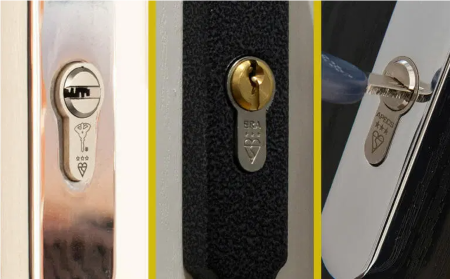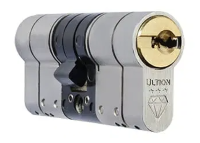
|
|||||||||||
|
|
|||||||||||
|
|||||||||||
|
Bolton Neighbourhood Watch News - January 2025 |
|||||||||||
Neighbourhood Watch is a VOLUNTEER LED crime prevention charity registered in the UK. We partner with organisations and agencies across the UK to help create safer, healthier, stronger and more secure communities.Although we use the same Neighbourhood Alert messaging platform as Greater Manchester Police (branded by GMP as Bee In The Loop), we are not part of the police service.We cannot take reports of crimes and Anti Social Behaviour and these should be reported directly to GMP. If it's an emergency and the crime is ongoing or there is a risk to life or property, ring 999. For all other incidents, call 101, use LiveChat on the GMP website or use one of the online reporting forms available on the website. |
 |
Neighbourhood Watch can:
Reduce / prevent local crime and disorder
Reduce fear of crime
Address issues relating to anti social behaviour
Create safer neighbourhoods
Build community spirit and cohesion
Reassure members of the public
Enhance partnership working with other community groups
Assist in the detection and apprehension of criminals through members providing information to the police
Improve quality of life and the local environment
Whether you are an individual, business or organisation, make a difference to your community and join your local scheme today
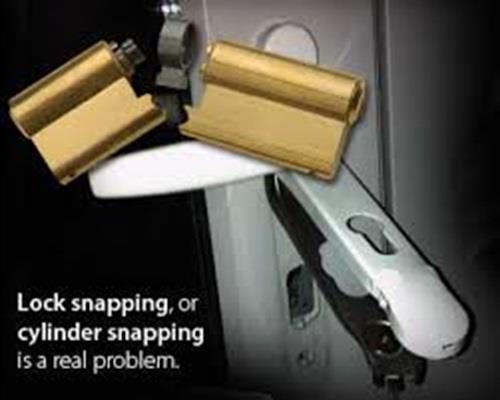 What is Lock Snapping?You may well have heard of “cylinder snapping” or “lock snapping“. Lock snapping is a very common method used by burglars to break into a property that has a euro cylinder lock, lock snapping requires ZERO skill by the thief to snap the lock. Euro lock cylinders prone to lock snapping are found on almost all domestic houses that have UPVC doors, although a significant number of composite & aluminium doors use them too, and they’re often used in commercial as well as domestic environments. 1. The Method of Lock SnappingThe method of lock snapping involves breaking the cylinder to then manipulate the lock to open. Whilst you may think that all the multi-locking points on your door make it secure, it’s important to realise they are all operated by the cylinder – this is the weakest point and if compromised all the locking points are rendered useless. How long does lock snapping take?It can take just 5-10 seconds for a thief to snap the lock.
How common is lock snapping?Lock Snapping is Spreading over the UKWhilst lock snapping previously been restricted mainly to the Yorkshire area we are now seeing Police giving warnings in other parts of the country. Lock Snapping Burglary StatisticsIn 2011 Lock snapping burglaries were at a record high, 15.87% of break-ins, used to lock snapping to gain access. Shortly after in 2011, SS312 diamond standard for lock cylinders was introduced. Following this, in 2012, the TTS07 standard was developed. In 2019 only 8.32% of burglaries involved lock snapping. 2. How an Anti Snap Lock can prevent a Burglary!From the below image you can see how fitting by an anti-snap euro cylinder lock to these UPVC doors a burglary attempt has been stopped. 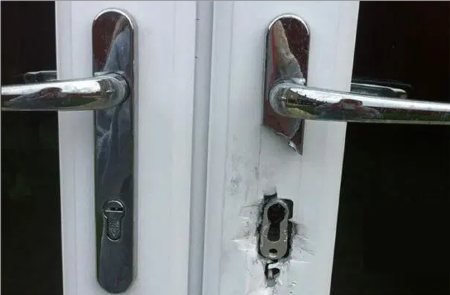 What lock is used to stop lock snapping?The lock on the above door protecting it from snapping is a euro cylinder lock that is tested and approved to SS312 diamond standard, which makes the lock Anti Snap. How a lock will protect against lock snapping:
To get one of these fitted we recommend contacting your local MLA approved locksmith who can advise you on getting one installed to your front and back doors. 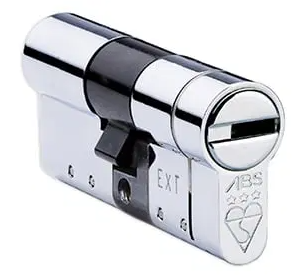 What lock standard you should be looking to fit is covered below in the What Standard Cylinder Should I Fit? section further on. 3. What Locks are at Risk to Lock Snapping?The only type of euro cylinder lock at risk to lock snapping is a euro cylinder that is not tested and approved to either SS312 Diamond or TS007 3*. We will cover what standard lock you should fit further on in this article. Types of Euro Cylinder Lock at Risk to Lock SnappingThe following types of euro cylinders are prone to lock snapping:
There are advantages and disadvantages of euro cylinder locks which range from security features to keying options. 4. How to tell you have a Euro Cylinder Lock FittedIf you have a uPVC/composite or wooden door, the chances are you have a euro cylinder lock. To help you easily identify your type of lock, look at the shape of the lock or our pictures below. The Shape of the lock – look out for a long cylindrical shape, with keyhole in middle What a Euro Cylinder Lock Looks Like – |
 |  |
OPTION 3 – 1 Star Kitemark Cylinder with 2 Star Door Furniture
A 1-star kitemark cylinder fitted with a 2-star kite mark door furniture ( door handle, cylinder guard ).
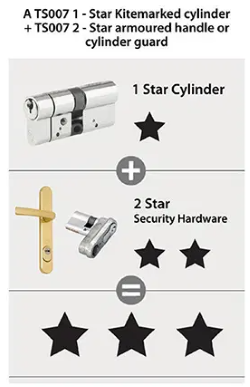
Our most secure uPVC door handle page will tell you the cost and advantages of high-security door handles.
7. How should a Euro Cylinder Lock be fitted?
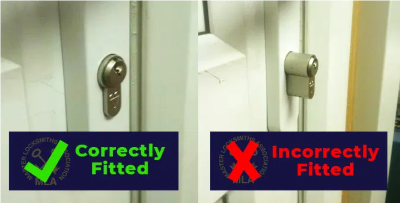
It is vital the euro cylinder lock on your door is fitted correctly, as lock cylinders vary depending on the door and handle thickness.
The below images show the correct and incorrect ways a lock should be fitted.
Incorrectly Fitted Euro Cylinder Locks – Prone to Lock Snapping
The pictures below are of euro cylinder locks not fitted properly:
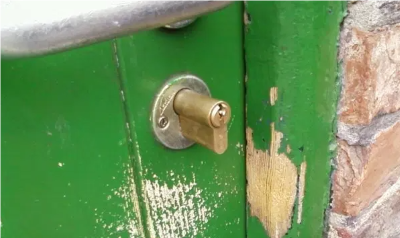
Why these euro cylinder locks are fitted incorrect
The more exposed/sticking out a lock cylinder is, the more prone it is to lock snapping
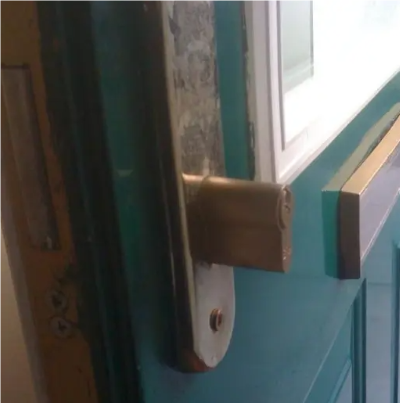
Correctly Fitted Euro Cylinder Lock
This is how a correct size and properly fitted lock cylinder should look:
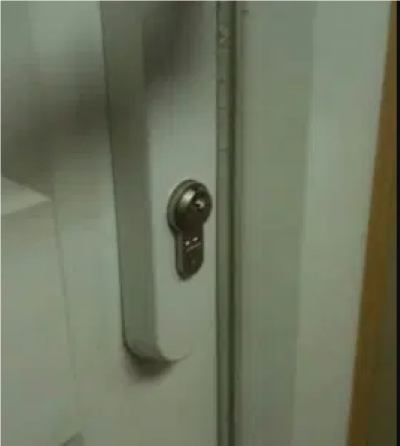
How to fit a Euro Cylinder Lock correctly
The euro lock cylinder should not protrude more than 3mm from the handle
Ideally, the lock cylinder should be completely flush with no external overhang.
The correct size of the lock cylinder is vital.
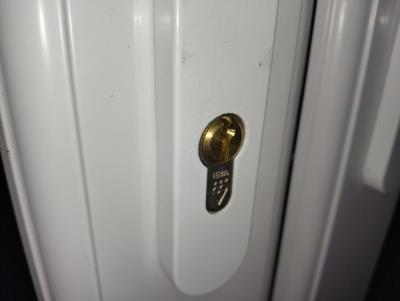
Summary on Lock Snapping
The quickest way to protect yourself against this burglary method on the rise is simple, fit a Sold Secure Diamond approved cylinder.
For extra door security you could fit some high-security door furniture too, such as 2-star kitemarked security handles.
Credit: Master Locksmith Association
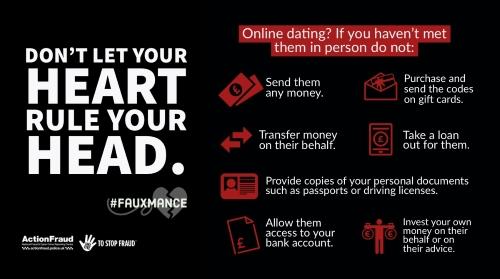
People who have fallen victim to romance scams tend to report the same pattern. If you or someone you know is using online dating or friendship sites and sees any of these signs, it may indicate you or they are being scammed:-
PROTECTING YOURSELF FROM ROMANCE FRAUD Just because there are some mean, dishonest people out there doesn’t mean you have to stop using dating sites altogether. You just have to be aware that scammers do exist, and follow some simple rules to protect yourself online:
Resources
Credit: Neighbourhood Watch Network |
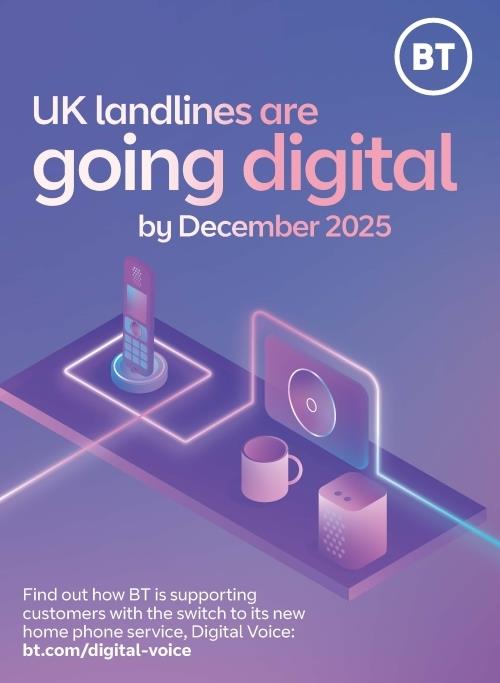 Phone scammers impersonating BT are exploiting upcoming changes to the landline phone network to con customers into giving them their payment details. Victims have reported cold calls, claiming to be from BT, stating that they need to confirm their personal and payment information so their landline can go digital before a January 2025 deadline. Some victims received fake calls asking for on-the-spot payments to move to the digital service, and were threatened with having their landline disconnected immediately when they refused. The scammers may know your name and address and use this information to convince you to trust them. Read on to find more about the digital landline switchover and what to do if you receive a scam call. The digital landline switchoverThe UK’s landline network is being upgraded to be fully digital, and was planned to be completed by January this year. But the completion deadline was recently extended to 2027. However, this hasn’t stopped scammers trying their luck by using the original 2025 deadline to confuse landline customers into sharing sensitive information. In the future, when the network upgrades are finished, landline calls will operate using digital technology called Voice over Internet Protocol (VoIP). It’s also sometimes known as Digital Voice. This may mean some older devices using your landline connection, such as home phones and personal care or security alarms, may need updating or they’ll no longer work. However, your landline provider should write to you explaining what the switchover means for you, and will give you advice and support with any changes you need to make. The digital switchover does not involve any fees. Your landline provider will never ask you to make payments or verify your payment information in order for your landline to be upgraded to the digital service. The scam calls aren’t just targeting landline numbers about landline services either. Which? has heard from victims without a landline phone who have been contacted on their mobile phones too. These victims were told the upcoming changes would mean they’d lose their home internet connection if they didn’t confirm their details. But this isn’t true. How to protect yourself from scam calls
What to do if you think you’ve been scammed by a cold callCall your bank straight away if you think you’ve given your payment details to a scammer over the phone. It should take steps to protect your money, and give you advice. If you’ve sent money through a bank transfer, the bank should be able to refund your money, partially or in full, depending on how much was stolen. The same goes for any money later taken from your accounts by scammers. Report phone scams to Action Fraud online or by calling 0300 123 2040. Action Fraud records scam reports and passes the information onto the police, who investigate further. If you’re called by someone claiming to be from BT, or any organisation, and they’re asking for payment or personal information, you can end the call or conversation any time. You can always contact the official customer services to check your service if you’re concerned by any threats a caller has made.
Author Credit: Lauren Merryweather - which.co.uk
Find out how Neighbourhood Watch is partnering with BT Digital Switchover on spreading the word about the switch over and running local face to face events where you can have your questions answered by clicking here |
 |
Reply to this message
 |
Message Sent By Neil McCall (Neighbourhood Watch Network, Vice Chair, Greater Manchester Neighbourhood Watch Association, Greater Manchester) |
|


